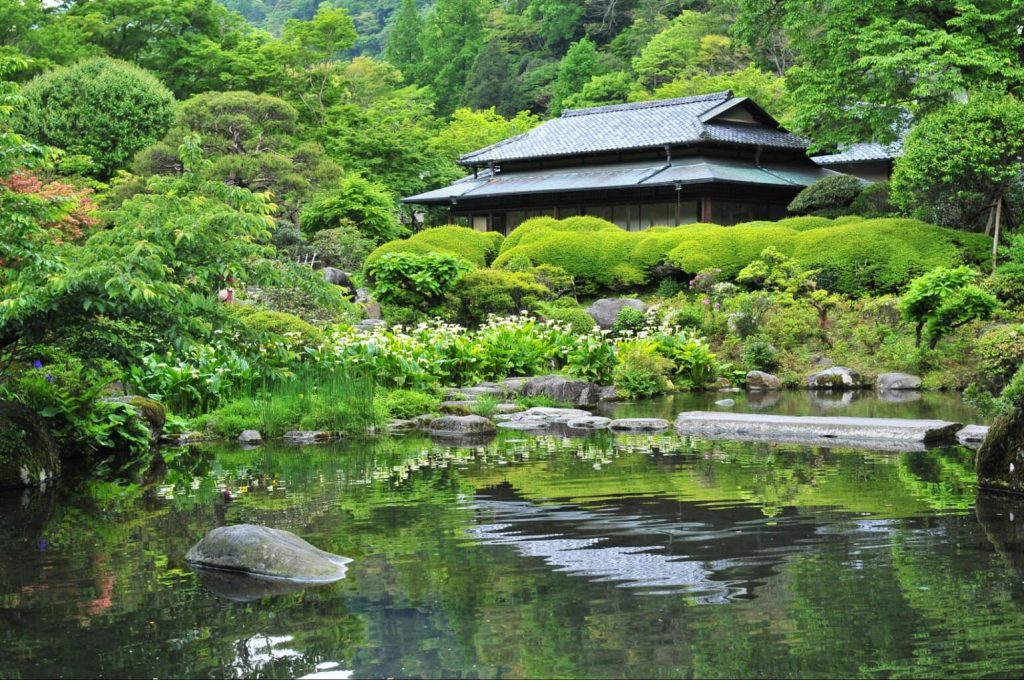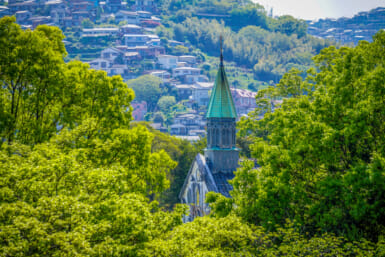With noted attractions like the scenic hot springs of Hakone, the surfer’s coast of Enoshima and the bustling Chinatown of Yokohama, Kanagawa offers an abundance of culture and natural beauty just a short trip from Tokyo.
Dive a bit deeper and you’ll uncover refined artisanal crafts, one-of-a-kind specialty foods, and luxurious hidden lodgings and gardens that will take your breath away. With excellent access by train and a myriad of choices for day trips and weekend stays, Kanagawa and the Hakone mountains are arguably the best places to take your first shot at going off the beaten track.
Featuring the unique mix of beauty, culture and convenience that Japan does so well, there is much to discover and savor in Hakone.

1. See Hakone Wood Mosaics Up Close
The deep forests of the Hakone mountain range produce a rainbow spectrum of wood: white dogwood, brown camphor, red cashew, purple linden and greenish magnolia. Yosegi-zaiku is a craft made by gathering wood from these precious trees to create intricately patterned boxes, a Japanese form of marquetry.
It’s an elaborate art. Artisans build their skills and experience over many years to master the precise cutting angles and bonding techniques involved in creating these gorgeous patterns. Born in an old Kanagawa post town during the late Edo Period (1603–1867), this technique is said to have been invented by a craftsman named Nihei Ishikawa, who combined different colors and grains of wood to make trays and boxes.
Hakone is the only place in Japan where you can buy authentic yosegi-zaiku, a craft that has been handed down since the end of the Edo Period. You can even try making some yourself in a hands-on workshop at the Hatajuku Yosegi Kaikan.

2. Embark on Scenic Hikes with Mount Fuji Views
The scenic, forested mountains of Hakone have a range of hiking trails ideal for all skill levels, including multiple short trails for beginners. One quick hike that balances ease and magnificence is the Kintoki course, a 4.5-kilometer trail from the Kintoki trailhead that leads up to a sublime view of Mount Fuji.
Mount Kintoki, one of the 300 famous mountains of Japan, soars above the nearby mountains and has minimal vegetation at the summit, which allows for maximum views. The peak also has two long-established teahouses, Kintoki Chaya and Kintaro Chaya, where you can unwind over their popular curry udon or earthy, nameko mushroom soup.
The name “Kintoki” comes from Kintaro, a Japanese folk hero famous for his fighting prowess and for capturing the mythical demon Shuten-doji. One theory suggests that Kintaro is based on a real-life samurai from the Heian Period (794–1185).

3. Bite Into Owakudani Black Eggs
Owakudani is a volcanic valley in Hakone and a stop on the Hakone Ropeway. It is renowned for its active sulfur vents — and the kuro tamago (black eggs) that can be made by boiling eggs in the hot springs seeping right out of the earth. The black color comes from a chemical reaction between the volcanic gas and metallic water content that causes iron to adhere to the eggshells. Take a stop here to try these freshly boiled eggs. They’re scientifically proven to taste better than your average eggs, with 20% more umami flavor. Stop by The Owakudani Kurotamago-kan, located on the Owakudani walking course, to taste for yourself.
But these eggs aren’t just tasty. It’s believed that well over a thousand years ago, a famed monk named Kobo Daishi built a jizo (a Buddhist guardian deity of children) sculpture in Owakudani. A legend evolved that eating kuro tamago will extend your lifespan by seven years due to their proximity to this jizo.

4. Decompress at Hakone Kowakien Ten-yu Inn
There are many superb lodgings available, but to relax with some of the best views in the area, venture in the direction of Mount Hakone from Kowakidani Station to get to Hakone Kowakien Ten-yu.
Hakone Kowakien Ten-yu is an upscale ryokan inn centered on traditional Japanese hospitality and harmony with nature. Each of the spacious, modern, Japanese-style guest rooms contains its own open-air hot spring bath. Meanwhile, the huge open-air hot spring has an infinity-pool-style bath with a good view of the forested mountains. Hakone Kowakien Ten-yu also offers carefully curated Japanese and Western-style dining experiences for breakfast and dinner that delight all five senses.

5. Reconnect With Nature at Yoshiike Ryokan and Sangetsu Garden
Yoshiike Ryokan provides a unique and spectacular stay amid a vast and beautiful garden that is registered as a valuable historical and cultural object. The inn is located a short distance from Hakone-Yumoto Station and offers luxurious rooms that range from traditional Japanese beauty to sophisticated modern fusion. Its serene open-air hot spring is designed as an elegant garden where guests can unwind. Private baths can also be rented.
The enormous, eight-acre Sangetsu Garden is a traditional stroll garden with a pond at its center. It contains the former villa of Yanosuke Iwasaki, a famed Meiji-era businessman and government official. The storied garden is a world of its own, with hills, islands, bridges, and endless flora.

6. Pop By Amazake Chaya
Amazake is a traditional, sweet Japanese beverage made from fermented rice that is served piping hot and packed with nutrients. Located on the old Tokaido road that feudal lords traveled to reach Edo, Amazake Chaya is a cozy teahouse dedicated to this ancient beverage.
The current owner is the store’s 13th generation and makes amazake with the same brewing method that was used back in the Edo Period. These techniques combine with the building’s thatched roof and traditional Japanese hearth to make visitors feel as if they’ve slipped back in time.
The delicious amazake is additive-free and made with locally grown rice. You can complement the experience with seasonal desserts like shaved ice in the summer. Even better, you can try their famous mochi pastries. These hand-pounded rice cakes are grilled over a charcoal stove every morning and offered in three flavors — we highly recommend the black sesame kinako flavor, made from freshly ground sesame.
Sponsored Post









